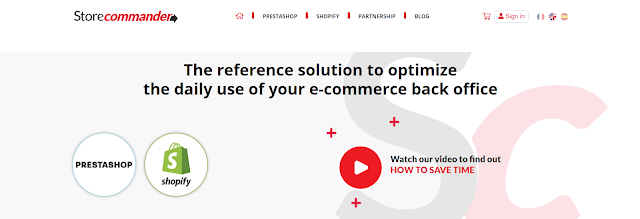How to integrate a semantic cocoon into your SEO strategy?
We are now evolving in a world that advocates digitalization, it is undeniable. Internet users regularly visit the Internet for both personal and professional reasons. Having a web page is therefore a prerequisite for companies.
It is indeed a question of making known and recognizing your site by making it appear on the first page of Google, you will thus be more visible and will generate more traffic.
The semantic cocoon is one of the methods that will help you achieve better notoriety and visibility on the web.
Before developing a semantic cocoon strategy, you need to know what it represents, and what is the “link juice”. Then, you have to find out what actions to put in place for a good semantic cocoon.
What is a semantic cocoon?
It is not uncommon for websites dealing with different themes to be poorly positioned on Google's search pages.
Sometimes, the organization of pages and content is not sufficiently clear and precise: it then requires greater involvement on the part of Google robots for the crawl of the website.
A site with little content will also have more difficulty in being properly crawled. The semantic cocoon can considerably help website owners, in particular, to make it easier for robots to crawl their pages.
It starts with organizing and categorizing siled page content to make your website easier to read.
Each section of your website is defined in relation to the searches carried out by Internet users. Your target is therefore the starting point and an important criterion to take into consideration.
This organization is linked to the internal mesh of your site which must be efficient and perfectly organized with themes.
In short, the semantic cocoon is a mix between the SEO silo structure and the internal mesh of your website. Each of the pages of the cocoon is oriented on a specific subject but always linked to the main object of your site. By combining all these pages, we see the semantic cocoon appear thanks to the links (internal mesh) that are integrated into each of these pages.
What is link juice?
Link juice refers to the Page Rank that one page passes to another it links to. This is made possible thanks to the internal mesh.
This juice is important because it conveys the popularity of these sites. The higher the index was on the original page of the link, the more it would have an impact on the positioning in the SERPs of the page that received the link. However, Page Rank no longer exists, but this notion is taken up by what is called “link juice”.
The link structure of the semantic cocoon
A semantic cocoon strategy is linked to the internal mesh of the website concerned. The cocoon can therefore have several levels and sub-levels.
To build the levels, you must analyze all the lexical fields on the entire site and create a page for each of the terms, then classify them into levels by grouping the terms of the same domain.
As you will have understood, the semantic cocoon is partly made to link and organize the pages in a hierarchical way.
The cocoon can have a large number of levels, the most important thing is to respect the structure of the links:
- All pages contain a link to the main page (parent page).
- Content is well organized with H2 headings and internal links to related pages (child page).
- The content may also contain links that lead to similar pages of the same level contained in the same cocoon (sister page).
For your semantic cocoon strategy to be effective, only pages with the same theme should be linked together. For example, you should not link a page talking about SEO with a page talking about plants.
How to set up a semantic cocoon?
The semantic cocoon is based on the publication of articles and texts with an expanded lexical field, a worked and relevant tree structure, as well as on the indexing of your pages on Google.
In order to build a good semantic cocoon strategy, it is important to clearly define your target, but also to analyze and determine the content they want to find on your website (based on their search intentions).
The themes addressed in your content must adapt to their expectations.
To set up a semantic cocoon, it is necessary to follow several steps:
- Determine the keywords
The pages of the cocoon will be united by a common theme. However, each page deals with a specific subject but belongs to the same lexical field. To choose the right keywords, you have to think about the keywords that allow good performance in SEO. For this, it is necessary to look at the requests of Internet users.
- Create a mind map
The mindmap is a visual representation in the form of a graph of your ideas emanating from a central subject. This allows you to prioritize them and create a tree structure for your site. You can do it with software or manually. This will allow content to flow (child pages).
- Setting up the tree
After determining the keywords and establishing a hierarchy of them,
They must be organized in a logical and clear way so that Internet users and search engine robots can easily find them. The traditional tree structure wants the contents to be hierarchized into headings and sub-headings with several levels. If it's an e-commerce site, it can look like product families with sub-categories of items. As part of the semantic cocoon, a common thread is needed between the pages.
- Create silos
The silo revolves around the main page (mother page) accompanied by secondary pages (child pages) which are in the middle of the silo and the final pages which are at the end of the silo.
The role of all these pages is to make the mother page go up in the search engines thanks to the keywords and the traffic generated by the child pages.
- Put the links in place
The internal mesh is the key to the success of a semantic cocoon. The Internet user will only have to click on the links placed in the content in order to navigate from one page to another.
- Integrate the cocoons in the sitemap
For the cocoons to be effective, they must be integrated into the infrastructure of the website. Thanks to this, search engines will be able to index the pages which will strengthen the performance of their optimization.
You understand that the semantic cocoon is efficient, and allows better optimization of your site. It also helps guide people to visit the site with a multitude of landing pages.
Would you like to be advised or accompanied in an SEO strategy to improve your natural referencing? Contact us to tell us about your project.



Comments
Post a Comment